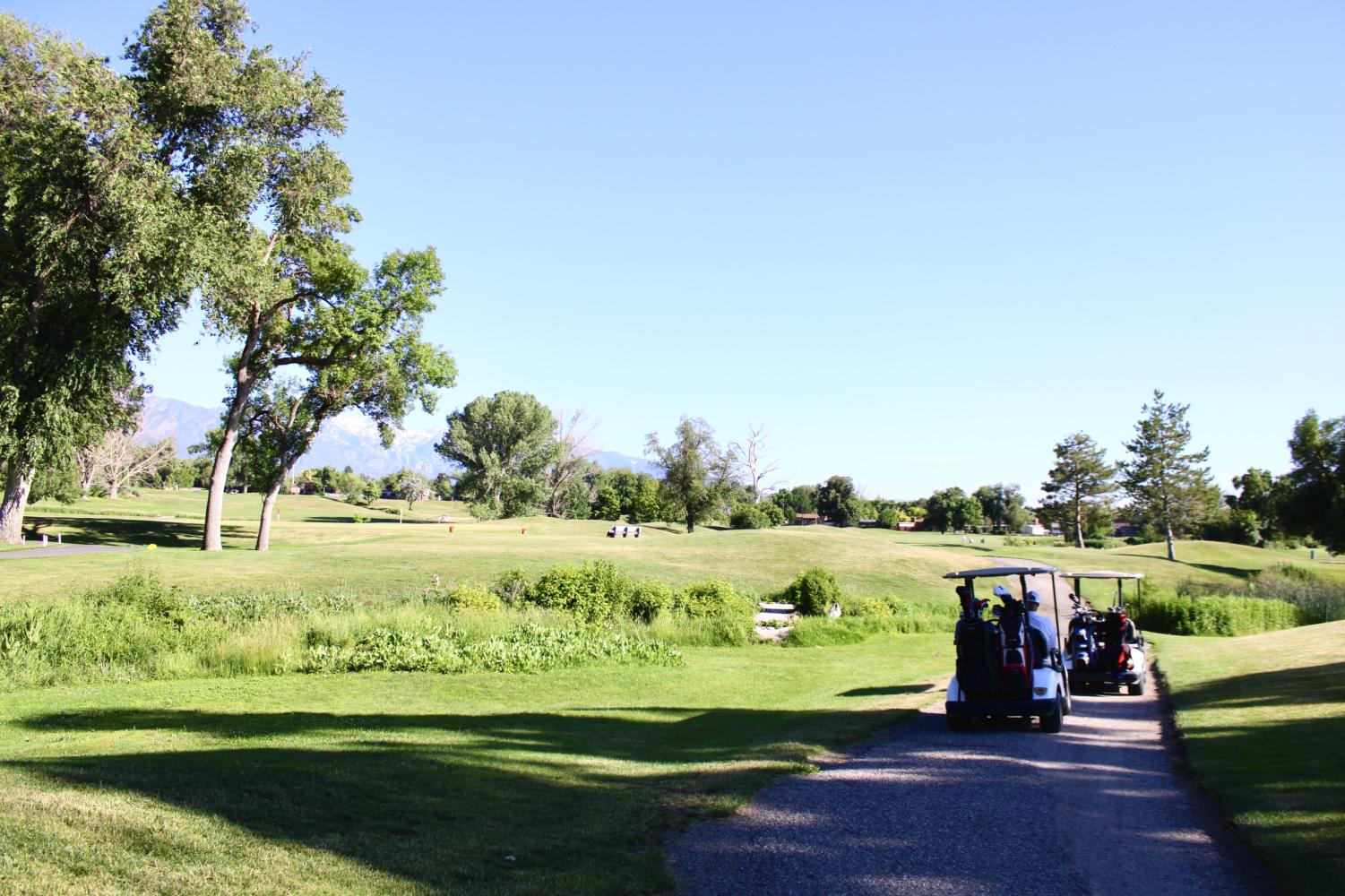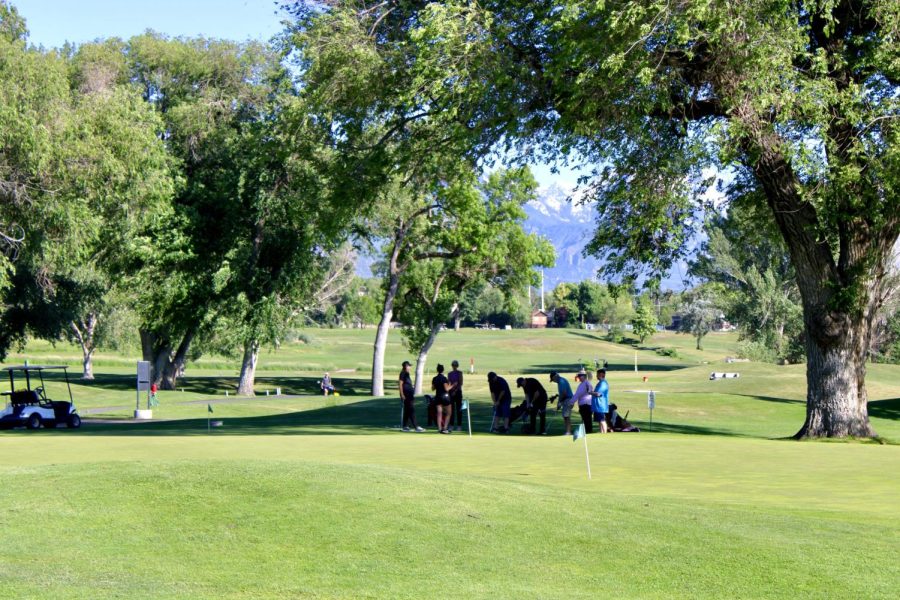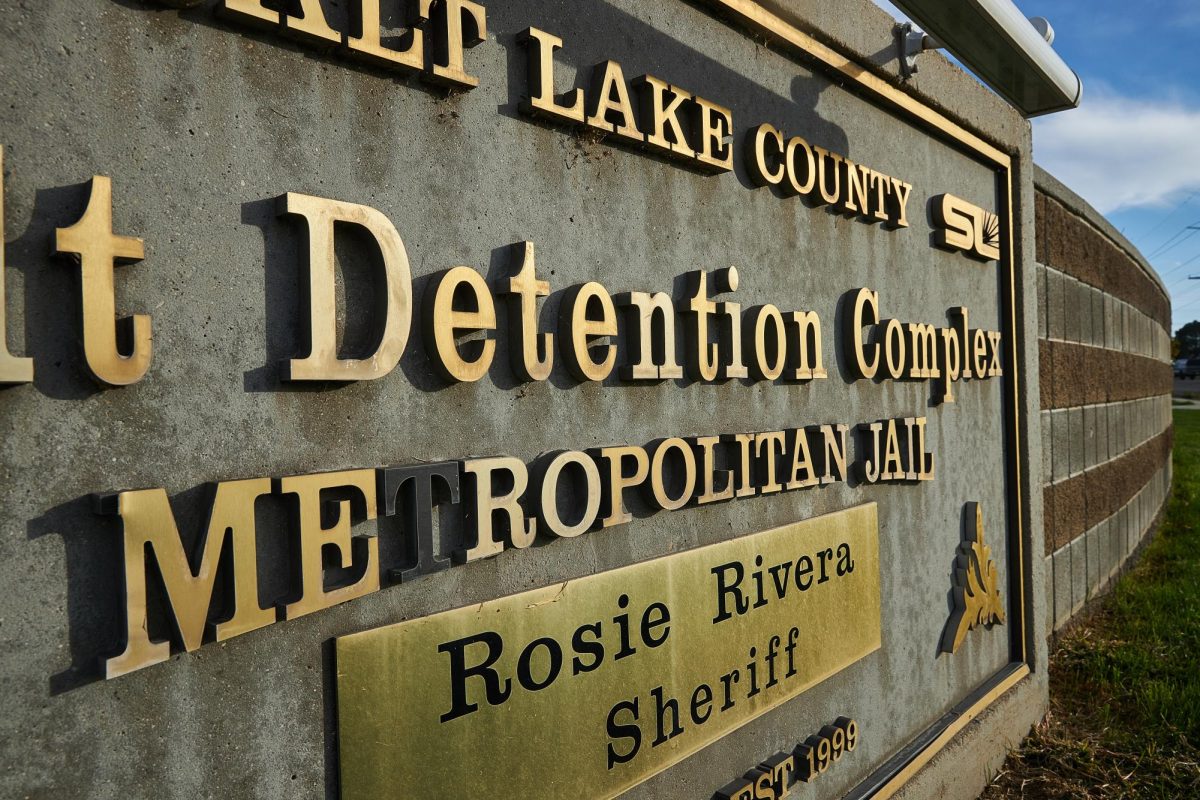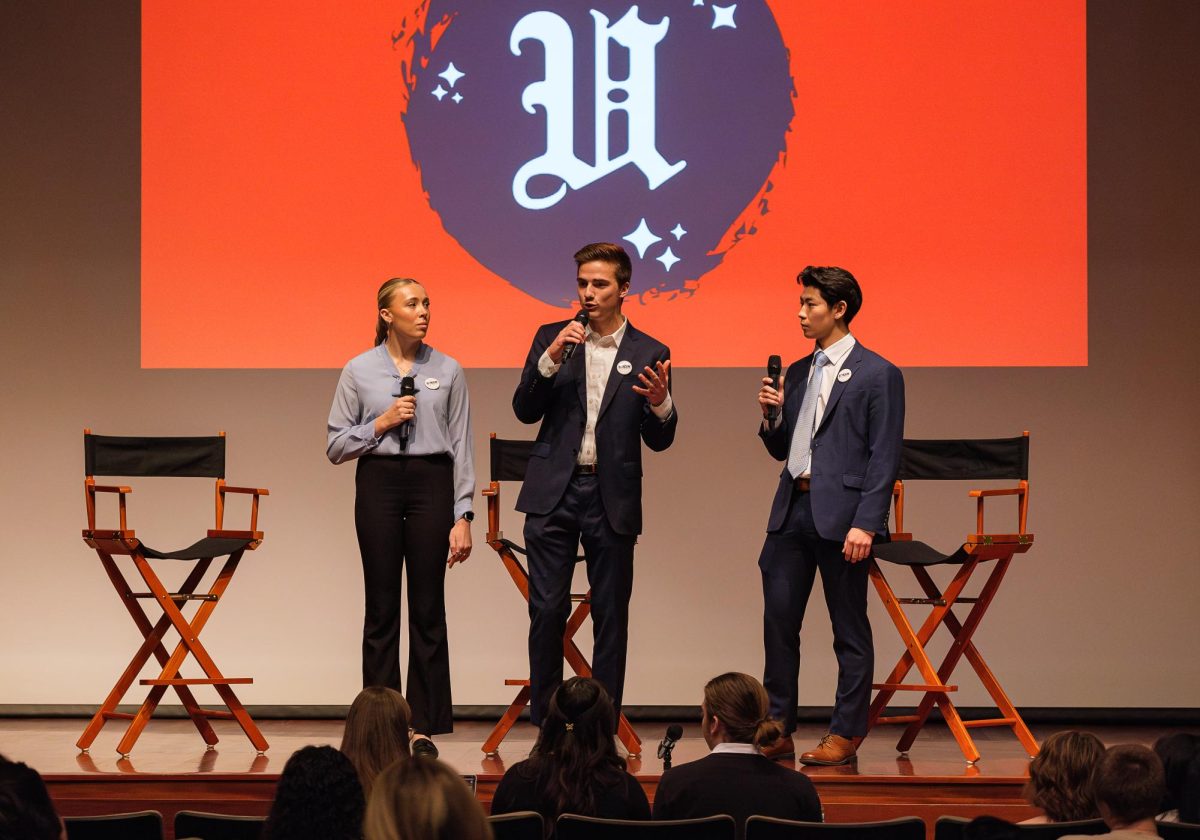Dunn: We Can Keep the Golf Courses
Forest Dale Golf Course in Salt Lake City on Wednesday, June 21, 2023. (Photo by Sophie Felici |The Daily Utah Chronicle)
June 23, 2023
When it comes to water issues there is one subject many people immediately think of — golf courses. Comedian and Host of Last Week Tonight John Oliver had a segment last year on the water shortage in the American West. He covered many important topics including the alfalfa industry, the shrinking of the Colorado River, various problematic pipeline projects and the Colorado River Compact’s disregard for Indigenous water rights. However, when covering Utah specifically, Oliver focused on the state’s golf courses. While golf courses can find ways to cut down their water usage, they aren’t the biggest contributors to overuse. Water conservation must focus on large-scale issues like agriculture, not on golf courses.
Golf Course Grass
When you drive past a golf course, you see its trademark greens and fairways. The sprawling fields of bright grass take up over 100 acres of land where golfers play around 18 different holes. Those fields, however, are not planted with the typical grass you see in most urban neighborhoods. Most lawns in the urban U.S. are planted with Kentucky bluegrass — known for its soft, velvet-like texture and decent resistance to foot traffic. It’s the most common “cool-season” grass in Utah and grows best in the spring and fall. According to the University of Illinois, cool-season grasses are those adapted to frost, low light and low temperatures, while warm-season grasses are adapted to high light and temperatures. Due to this, Kentucky bluegrass does not do well in drought conditions.
Utah is one of the most arid states in the U.S., and last year 99% of the state was in a severe drought. This means that Utah is a poor place to plant Kentucky bluegrass. Yet, the plant is still especially common for lawns, leading to excessive water use to keep them alive. On the other hand, golf courses typically use Bermuda grass, a “warm-season” grass and, unlike Kentucky bluegrass, is drought resistant. Bermuda grass also recovers from damage quickly. This makes it an ideal choice for large golf course greens. Without knowing this information, many make the assumption that golf courses’ grass is green because of excessive watering instead of natural durability.

Golf Course Water Use
Golf courses’ use of durable grass has led them to use considerably less water than the rest of the state. Across Utah, the agriculture industry uses 2 billion gallons of water daily. The general public uses 621 million gallons daily, while golf courses use a mere 21 million daily. Golf courses also account for only four percent of Utah’s turf grass. And although Southern Utah has a reputation for high-end retirement communities and golf courses — with 19 in the St George metropolitan area — Utah has significantly fewer golf courses than other Great Basin states. There are 140 courses in Utah, compared to 921 in California and 370 in Arizona.
Golf courses generate around $805 million in economic impact. In April of this year, the Salt Lake Tribune released an article that reported that golf participation in 2020 increased by 25%. This was likely due to the built-in ability to social distance while playing golf, making it a great sport for the height of the COVID-19 pandemic and bolstering course revenue. Golf courses also have a high economic return per acre-foot of water, as they account for only 0.65% of the total diverted water in Utah. This is especially true when compared to Utah’s alfalfa crop, which uses half of all of Utah’s water, yet only generated $488 million in 2021. Alfalfa is a forage legume used for cattle grazing and needs constant moisture to grow. In my previous article on Utah water usage, I explained why alfalfa as a crop should be re-evaluated, if not abandoned, in Utah.
As drought continues to be a large challenge in Utah, golf courses are simply vilified. Another factor is that while most Utah golf courses’ water data is in the public record, some courses don’t track their water usage. Lack of data — not only on golf course use — is a major challenge when evaluating water use and conservation. At this year’s Wallace Stegner Center symposium, Rick Maloy, water conservation manager at the Central Utah Water Conservancy District, presented the successes and shortcomings of how we measure water. He explained that comparison of gallons per capita per day is beneficial, but only if the context is understood.
Golf Courses Moving Forward
Many golf courses have made efforts to reduce water usage. The aforementioned article from The Tribune also detailed the water usage of various golf courses across Utah. Many golf courses did increase water usage between 2021 and 2022. However, the Tribune reported that 40 of Utah’s golf courses cut water use during that time. The article also explains the strategy of Murray Parkway Golf Course, which uses runoff water from Interstate 215. Additionally, in southern Utah, golf courses are watered with recycled water. Recycled water is irrigation-grade water, meaning it doesn’t have to undergo the same amount of cleaning that drinking-grade water is required to have. This means that golf courses aren’t adding to the energy costs required to clean water, unlike household lawns which are watered by the house’s drinking-grade supply. The water usage of golf courses is imperfect, but the conservation efforts so far are a good start.
There’s always room for improvement, and golf courses should be looking for ways to cut down water usage like the rest of us. However, golf courses account for a small percentage of water usage. They also bring in economic value and provide areas for a fun sport for all fitness levels. We have a duty to conserve water in Utah, but we can keep the golf courses.









